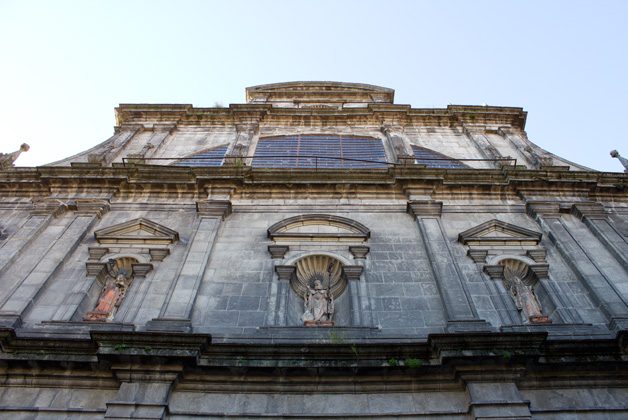
In 1596, a Benedictine monastery was founded in Porto, of which the Igreja de São Bento da Vitória formed part, although the church was rebuilt at the end of the 17th century and only solemnly inaugurated in 1707.
It is a large and imposing building with a single nave and a cross-shaped floor plan, displaying a harmonious decoration.
Inside the church, attention is drawn to the group of organs, one of which is silent and was only built in order to maintain the sense of balance, while another is considered to be one of the finest examples of organ making in Portugal. It was designed by the Benedictine monk Frei Manuel de São Bento between 1719 and 1722.
Equally impressive is the carved and gilded woodwork, particularly that of the high altarpiece carved in the Portuguese baroque style, which has been attributed to the master woodcarver Gabriel Rodrigues and was made between 1716 and 1719, while the altarpieces at the top ends of the transept are rococo in design, being from the Oporto school and dedicated to the Holy Sacrament and Our Lady of Exile. They were made in 1755 by the woodcarvers José da Fonseca Lima and José Martins Tinoco.
Mention should also be made of the pulpits with 17th-century rosewood railings and the 18th-century stalls of the upper choir, designed by Marceliano de Araújo from Braga, one of the most representative artists in the country. The backs of the stalls are decorated with narrative panels relating the life of St. Benedict.